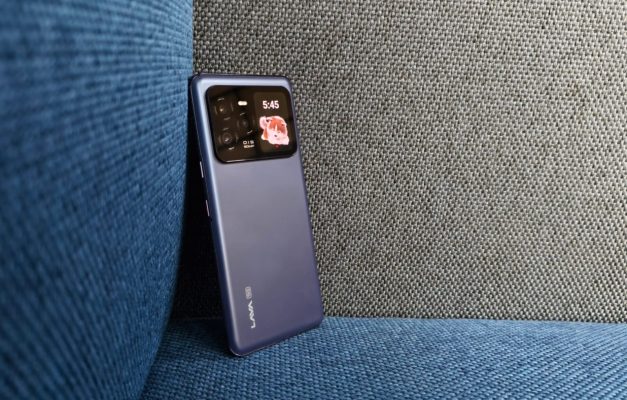
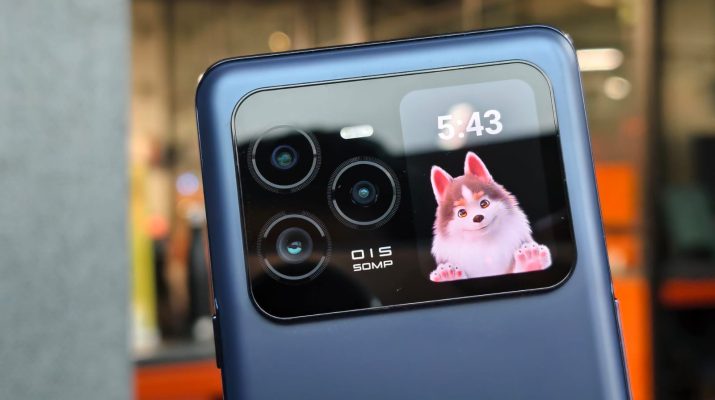
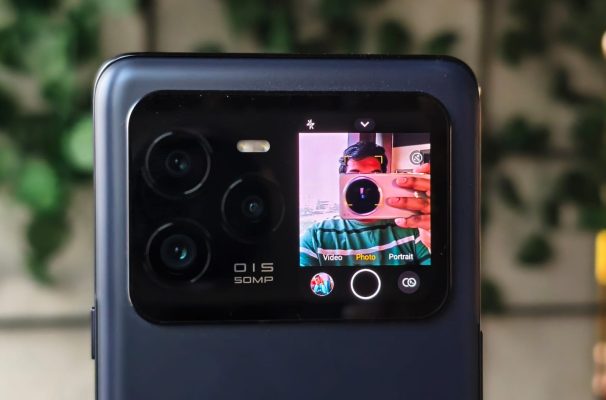
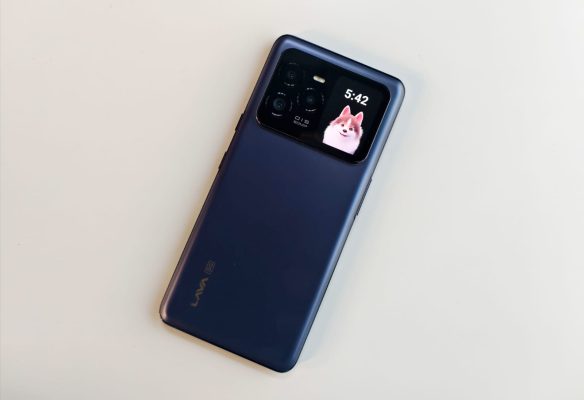
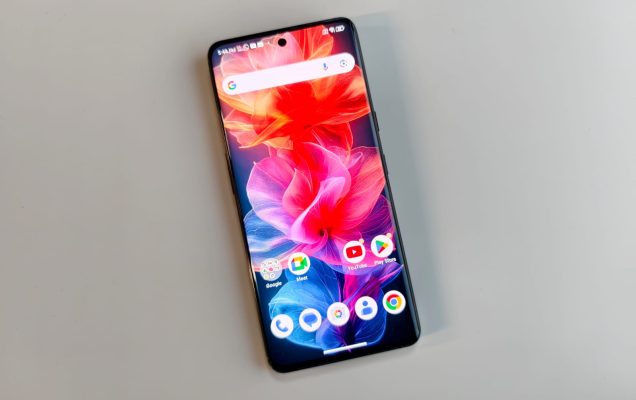
Over All Rating 4/5
Price Starts From ₹ 20,999/-
PROS 👍
- Innovative Secondary Display
- Good Gaming Performance
- Decent Battery Life with Fast Charging
CONS 👎
- Average Camera Performance
- Plastic Build Material
- Limited Customization for Secondary Display
Indian smartphone brand Lava has been making waves with its Agni series, and the Lava Agni 3 brings a fascinating twist to the mid-range segment. The most unique feature? A tiny secondary AMOLED display on the back which acts as a notification center and doubles as a camera viewfinder. With its competitive pricing, the Agni 3 aims to challenge the best smartphones under ₹25,000. Let’s dive into the details and see if it matches the hype.
Lava Agni 3 with secondary screen Review
Lava Agni 3: Design and Build

The Lava Agni 3 strikes a balance between aesthetics and durability. The device features a curved 6.78-inch AMOLED display on the front and a plastic glass back, giving it a sleek, modern look. Available in two colour options – Blueish and White. The review unit we tested is the blueish colour, but after comparing both, the White variant feels more premium and eye-catching.

The smartphone has a durable chassis. Despite its affordable pricing, it feels sturdy in hand. The rounded edges offer a comfortable grip, and the overall design indicates it could withstand drops; however, a fall onto the screen may still be problematic. The Agni 3’s 6.78-inch AMOLED display boasts an impressive 1.5K resolution, which ensures sharp visuals and vibrant colours. The 120Hz refresh rate makes navigation smooth, enhancing the overall user experience. With a peak brightness of 1200 nits, the screen is bright enough for indoor usage and remains fairly legible outdoors, except under harsh sunlight, where visibility slightly diminishes. At this price point, the display is a standout feature, delivering an immersive experience for content consumption and gaming. But the real head-turner is the 1.8-inch secondary AMOLED display on the back. While you can’t run Android apps on this tiny screen, it’s ideal for quick glances at notifications, a digital clock, and even acting as a camera viewfinder for selfies using the high-resolution rear cameras. Lava has added a fancy touch by incorporating an animated dog character that reacts with adorable gestures when you tap the screen. While this is entertaining, it would have been even better if users could customize it with different animals or themes.
Lava Agni 3: Performance
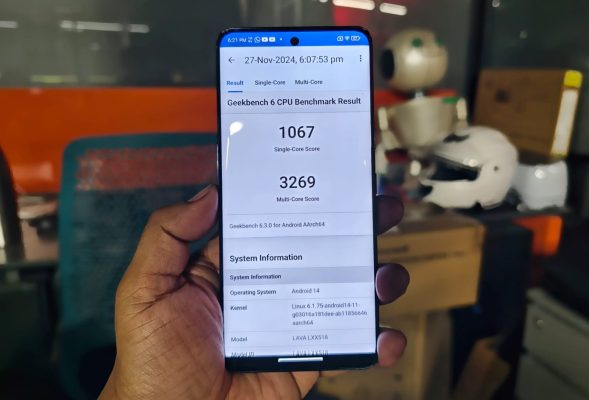
Under the hood, the Lava Agni 3 packs a punch with the MediaTek Dimensity 7300X processor, an octa-core chipset designed for efficient performance and power management. The device has 8GB of LPDDR5 RAM and 256GB of UFS 3.1 storage for multitasking, gaming, and everyday tasks.
The Agni 3 handled multiple apps effortlessly during testing, with no noticeable lag or slowdowns. Even resource-intensive tasks like video rendering using the VN editor were managed smoothly, showcasing the power of the processor. For gamers, the Agni 3 doesn’t disappoint. Popular titles like BGMI ran at 60fps for extended sessions, with only slight warming after 20 minutes. The built-in vapour chamber cooling system effectively maintained performance, keeping gameplay smooth in the 50-60 fps range. Other games, such as Asphalt 9, delivered a similarly fluid experience, making the Agni 3 a capable gaming device on a budget.
For the raw benchmark test, we ran Geekbench 6, and the results were quite impressive and provided clear insights into its capabilities. In the single-core CPU performance test, it achieved a score of 1067, indicating strong performance in tasks that rely heavily on single-threaded processing. Meanwhile, in the multi-core performance category, it scored an impressive 3269, showcasing its ability to handle multi-threaded applications and tasks effectively. Additionally, the GPU performance result came in at 2638, further highlighting the robust graphical capabilities provided by this chipset. Overall, these results demonstrate that the Mediatek Dimensity 7300x is a powerhouse when it comes to performance, making it a competitive choice in its class.
Lava Agni 3: Camera

The triple-camera setup on the Lava Agni 3 provides multiple variations but stops short of excelling across the board. It features a 50-megapixel primary camera with a 1/1.55-inch sensor and OIS, capturing decent pictures and detailed images in well-lit conditions. The primary sensor preserves colour accuracy and delivers crisp shots, making it a reliable option for everyday casual photography. Alongside the primary sensor, the phone includes an 8-megapixel telephoto lens with 3x optical zoom, enough to capture distant subjects without significantly losing quality. However, while the telephoto lens provides valuable flexibility, its performance is noticeably less sharp than the primary camera. It also goes up to 10X of digital zoom but with a heavy loss in quality. The third sensor is an 8-megapixel ultrawide lens with a 112˚ field of view, which is handy for group shots and scenic landscapes. Though it does a decent job in well-lit settings, distortion around the edges and reduced detail are evident in some scenarios.

The standout feature of the Agni 3’s camera system is the integration of the 1.8-inch secondary display on the back, which doubles as a camera viewfinder. This clever addition allows users to utilize the rear cameras for selfies, offering sharper and more detailed results than front-facing 16-megapixel cameras. The setup is ideal for content creators or anyone who values high-quality self-portraits. That said, the camera system is more suited for casual users than professionals, as it struggles slightly in low-light conditions and doesn’t quite match the dynamic range or refinement of premium competitors.
Lava Agni 3: Battery Life
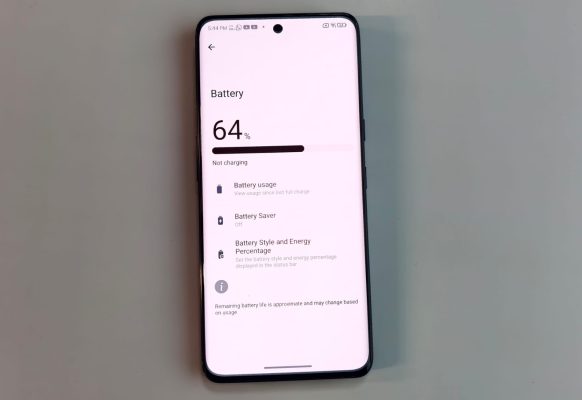
The Lava Agni 3 is powered by a 5000mAh battery, offering decent backup for most users. With moderate usage, including social media, browsing, and video streaming, the phone easily lasts a full day. However, intensive gaming or prolonged 4K video recording will drain the battery faster.
The device supports fast charging at 66W, allowing for quick battery recharge. In testing, it could charge up to 50% in just 30 minutes. During a 4K video playback test, the battery only depleted by 12% over 30 minutes, so you can comfortably watch an entire movie without recharging. Overall, the battery life is reliable; however, heavy users may reach for the charger by the evening.
Lava Agni 3: Verdict
The Lava Agni 3 is a bold move by the brand to stand out in the crowded mid-range smartphone market. Its secondary display is more than a gimmick, offering practical benefits like quick notifications and an enhanced selfie experience. For ₹20,000, the Lava Agni 3 meets most requirements for everyday users. Although some areas could be improved, such as visibility in direct sunlight and camera performance, these are minor issues considering the phone’s competitive pricing and features. If you’re searching for a unique option that won’t break the bank, the Lava Agni 3 is worth considering. However, you may also want to explore other alternatives, including the Infinix Zero 40 and the Nothing Phone (2a).
Specification
| Display: | 6.78-inches AMOLED Display |
| Camera: | 50MP, 8MP, 8MP |
| RAM: | 8GB |
| Processor: | Meditek Dimensity 7300X |
| Battery: | 5000mAh |
| OS: | Android 14 |

